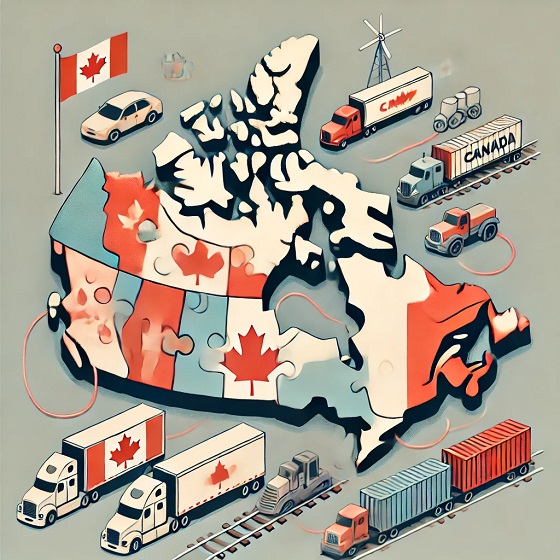Business
Every Federal Regulator Destroys 138 Jobs

From the Brownstone Institute
By
This lost output is made of jobs and businesses that were never started. Or were stunted by strangling regulations — mom and pops chased into bankruptcy as collateral damage to new regulations — say, a diner forced to spend $30,000 on a low-energy exhaust fan.
An Auburn University study says every single regulator destroys fully 138 private sector jobs every year you keep him on the job.
With nearly 300,000 federal regulators, the shock is that we still have any jobs at all.
The Two Scariest Words in the English Language
A lot of the excitement around the Department of Government Efficiency — DOGE — focuses on the dollars saved. But more important is all the things the federal government destroys with those dollars.
Specifically, the millions of jobs destroyed by the two scariest words in the English language: federal regulators.
A few weeks ago I mentioned how DOGE under Elon and Vivek is taking aim at the regulatory mothership that strangles the American economy and fuels the totalitarian administrative state — you may remember it from Covid.
A mother ship that is oddly enough unconstitutional according to a pair of recent Supreme Court decisions — Loper Bright Enterprises v Raimondo and West Virginia v EPA.
I asserted this could unleash the economy like nothing we’ve seen in the past century.
And the reason is because it’s hard to overstate just how destructive regulations are.
Every Regulator Destroys 138 Jobs
One 2017 study by the Phoenix Center and Auburn University found that every single full-time regulator destroys 138 jobs.
GDP-adjusted to today, that translates to $16.5 million of economic output. For a hundred-thousand dollar bureaucrat.
This lost output is made of jobs and businesses that were never started. Or were stunted by strangling regulations — which are generally bought by big corporations specifically to strangle small competitors.
Along with mom and pops chased into bankruptcy as collateral damage to new regulations — say, a diner forced to spend $30,000 on a low-energy exhaust fan.

So it’s not the bureaucrat’s hundred thousand salary that matters. It’s the 138 jobs he takes out. Every single year you keep him around.
In fact, you could fire him, keep paying him for life, and still put a hundred families in the middle class.
In recent videos I’ve mentioned research saying one dollar in taxes destroys 3 dollars in GDP. A regulator blows that out of the water — each dollar in regulator salary destory 112 dollars in output.
Given there’s roughly 288,000 full-time federal employees involved in regulatory activities, that implies an annual cost of regulation of around $5 trillion. One-fifth of our entire economy.
This means DOGE slashing tens of thousands of regulations could spark Morning in America even if we keep every last one of them on the payroll.
The Top 3 Regulatory Offenders
The worst 3 regulatory offenders are the EPA, which prey especially on small businesses least able to afford their never-ending mandates.
Second is securities mandates — namely Dodd-Frank and Sarbanes-Oxley — that have all but closed public markets to start-ups and shelter banks and insurers from competition.

And labor regulations — namely FLRA, NLRB, an alphabet soup including Obamacare mandates and occupational licensing. There are brutal for small businesses that might take a gamble on marginal workers but are locked in.
And they raise the cost of hiring to the point that companies downsize or move to China to survive.

Of course, these are just the start. The regulatory code has grown like a monster for a hundred years in literally every domain you can imagine, from braiding hair to collecting rainwater on your property to giving health advice — which is illegal unless you’re a doctor.
And, my personal favorite, the regulatory mandate to literally add poison — ethanol — to any alcohol that’s not taxed, including mouthwash. In case you thought the federal government would never poison you on purpose.
What’s Next
Deregulation is central to Trumponomics — low inflation and fast growth.
Because the best way to do both is to reduce the federal burden — the spending, sure, but above all the forest of regulations strangling our economy. Even if DOGE doesn’t manage to save a penny, gutting the regulatory state will pay us back 138-fold.
Republished from the author’s Substack
Business
Top Canadian bank ditches UN-backed ‘net zero’ climate goals it helped create
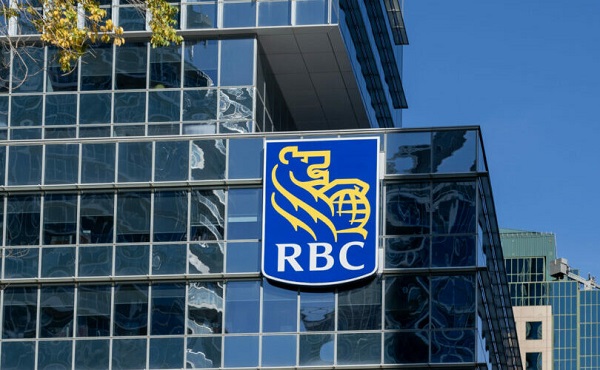
From LifeSiteNews
RBC’s dropping of its ‘net zero’ finance targets came just one day after the Liberal Party under Mark Carney was re-elected in Canada.
Just one day after the re-election of the Liberal Party under Mark Carney, the Royal Bank of Canada joined the growing list of top banks withdrawing from a United Nations-backed “net zero” alliance that supports the eventual elimination of the nation’s oil and gas industry in the name of “climate change.”
The Royal Bank of Canada (RBC) on Tuesday quietly dumped its UN-backed Net-Zero Banking Alliance (NZBA) sustainable finance targets, which called for banks to come in line with the push for net-zero carbon emissions by 2050. The NZBA is a subgroup of the Glasgow Financial Alliance for Net Zero (GFANZ), which Carney was co-chair of until recently.
RBC’s departure comes despite the fact that it was one of the NZBA’s founding members.
RBC joins Toronto-Dominion Bank (TD), Bank of Montreal (BMO), National Bank of Canada, and the Canadian Imperial Bank of Commerce (CIBC) who earlier in the year said they were withdrawing from the NZBA.
The bank announced the move away from a green agenda in its 2024 sustainability report, noting it would no longer look to pursue a $500 billion sustainable finance goal. It cited changes to Canada’s federal Competition Act as the reason.
The changes to the act, known as the “greenwashing law,” now mandate that companies provide proof of their environmental claims.
“We have reviewed our methodology and have concluded that it may not have appropriately measured certain of our sustainable finance activities,” noted RBC in its report.
RBC also noted it would not make public any of its metrics regarding its energy supply ratio.
Monday’s election saw Liberal leader Carney beat out Conservative rival Poilievre, who also lost his seat. The Conservatives managed to pick up over 20 new seats, however, and Poilievre has vowed to stay on as party leader, for now.
Carney worked as the former governor of the Bank of Canada and Bank of England and spent many years promoting green financial agendas.
The GFANZ was formed in 2021 while Carney was its co-chair. He resigned from his role in the alliance right before he announced he would run for Liberal leadership to replace former Prime Minister Justin Trudeau.
Large U.S. banks such as Morgan Stanley, JPMorgan Chase & Co, Wells Fargo and Bank of America have all withdrawn from the group as well.
Since taking office in 2015, the Liberal government, first under Trudeau and now under Carney, has continued to push a radical environmental agenda in line with those promoted by the World Economic Forum’s “Great Reset” and the United Nations’ “Sustainable Development Goals.” Part of this push includes the promotion of so called net-zero energy by as early as 2035.
Business
Overregulation is choking Canadian businesses, says the MEI

 From the Montreal Economic Institute
From the Montreal Economic Institute
The federal government’s growing regulatory burden on businesses is holding Canada back and must be urgently reviewed, argues a new publication from the MEI released this morning.
“Regulation creep is a real thing, and Ottawa has been fuelling it for decades,” says Krystle Wittevrongel, director of research at the MEI and coauthor of the Viewpoint. “Regulations are passed but rarely reviewed, making it burdensome to run a business, or even too costly to get started.”
Between 2006 and 2021, the number of federal regulatory requirements in Canada rose by 37 per cent, from 234,200 to 320,900. This is estimated to have reduced real GDP growth by 1.7 percentage points, employment growth by 1.3 percentage points, and labour productivity by 0.4 percentage points, according to recent Statistics Canada data.
Small businesses are disproportionately impacted by the proliferation of new regulations.
In 2024, firms with fewer than five employees pay over $10,200 per employee in regulatory and red tape compliance costs, compared to roughly $1,400 per employee for businesses with 100 or more employees, according to data from the Canadian Federation of Independent Business.
Overall, Canadian businesses spend 768 million hours a year on compliance, which is equivalent to almost 394,000 full-time jobs. The costs to the economy in 2024 alone were over $51.5 billion.
It is hardly surprising in this context that entrepreneurship in Canada is on the decline. In the year 2000, 3 out of every 1,000 Canadians started a business. By 2022, that rate had fallen to just 1.3, representing a nearly 57 per cent drop since 2000.
The impact of regulation in particular is real: had Ottawa maintained the number of regulations at 2006 levels, Canada would have seen about 10 per cent more business start-ups in 2021, according to Statistics Canada.
The MEI researcher proposes a practical way to reevaluate the necessity of these regulations, applying a model based on the Chrétien government’s 1995 Program Review.
In the 1990s, the federal government launched a review process aimed at reducing federal spending. Over the course of two years, it successfully eliminated $12 billion in federal spending, a reduction of 9.7 per cent, and restored fiscal balance.
A similar approach applied to regulations could help identify rules that are outdated, duplicative, or unjustified.
The publication outlines six key questions to evaluate existing or proposed regulations:
- What is the purpose of the regulation?
- Does it serve the public interest?
- What is the role of the federal government and is its intervention necessary?
- What is the expected economic cost of the regulation?
- Is there a less costly or intrusive way to solve the problem the regulation seeks to address?
- Is there a net benefit?
According to OECD projections, Canada is expected to experience the lowest GDP per capita growth among advanced economies through 2060.
“Canada has just lived through a decade marked by weak growth, stagnant wages, and declining prosperity,” says Ms. Wittevrongel. “If policymakers are serious about reversing this trend, they must start by asking whether existing regulations are doing more harm than good.”
The MEI Viewpoint is available here.
* * *
The MEI is an independent public policy think tank with offices in Montreal, Ottawa, and Calgary. Through its publications, media appearances, and advisory services to policymakers, the MEI stimulates public policy debate and reforms based on sound economics and entrepreneurship.
-
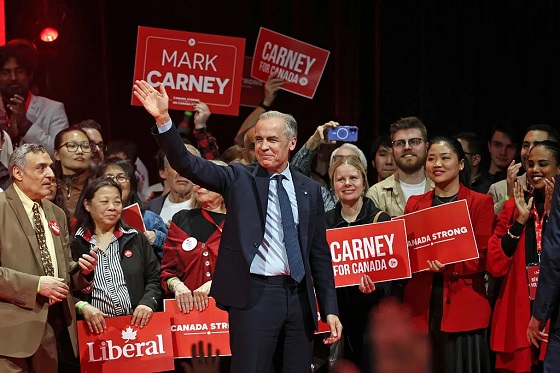
 Alberta2 days ago
Alberta2 days agoAlberta’s future in Canada depends on Carney’s greatest fear: Trump or Climate Change
-

 Agriculture2 days ago
Agriculture2 days agoLiberal win puts Canada’s farmers and food supply at risk
-
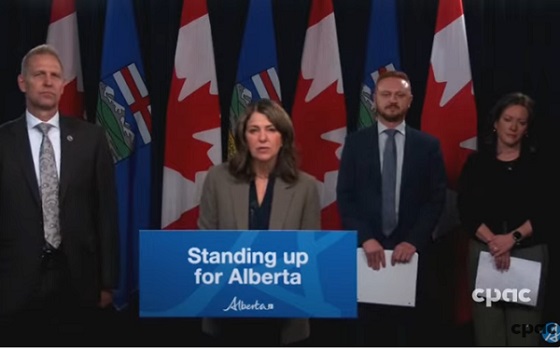
 Alberta2 days ago
Alberta2 days agoIt’s On! Alberta Challenging Liberals Unconstitutional and Destructive Net-Zero Legislation
-

 2025 Federal Election1 day ago
2025 Federal Election1 day agoThe Liberals torched their own agenda just to cling to power
-

 International2 days ago
International2 days agoNigeria, 3 other African countries are deadliest for Christians: report
-

 Business1 day ago
Business1 day agoTrump says he expects ‘great relationship’ with Carney, who ‘hated’ him less than Poilievre
-

 Business1 day ago
Business1 day agoCanada urgently needs a watchdog for government waste
-
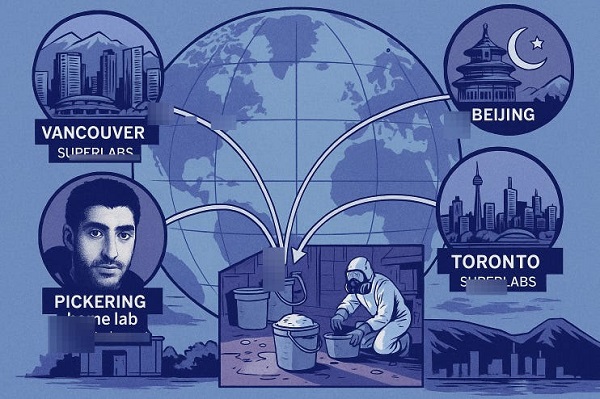
 Crime13 hours ago
Crime13 hours agoCanada Blocked DEA Request to Investigate Massive Toronto Carfentanil Seizure for Terror Links







